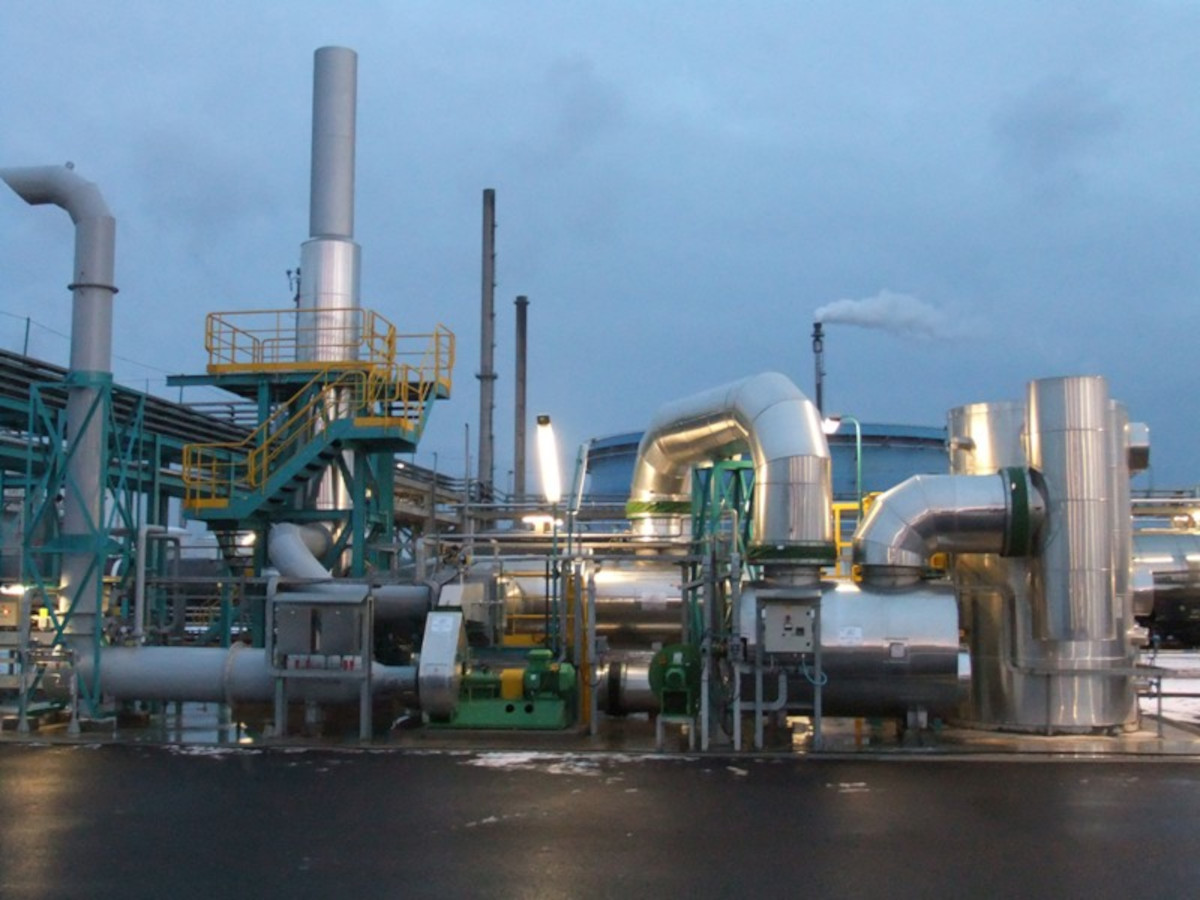The catalysts used for this application are based on metal oxides or noble metals. The catalytic thermal oxidation plants can be designed in different configurations, using:
- catalysts in the form of pellets or monolithic (honeycomb) for pollution control, for example, in combustion systems complete with thermal recovery in order to further reduce auxiliary fuel consumption;
- catalyst in the form of random ceramic material (saddles) in regenerative catalytic oxidizers.
The combustion temperature is in the range of 280-400°C depending on the composition of the pollutant substances and therefore after choosing the type of catalyst. The catalytic thermal oxidation plants are very efficient but not very strong as the presence of some pollutants in the air to be treated (for example halogenated compounds, silicons, heavy metals) can deactivate the catalyst, thus “poisoning” it and requiring its replacement. These machines are normally applied in the chemical, pharmaceutical, painting industries and can be equipped with all the pre-and post treatment systems making them useful for the intended purpose.
Features and advantages
- Electrical switchgear with PLC and remote assistance.
- Independent combustion system to guarantee correct operation of the plant.
- Modulating combustion system to maintain the correct operating temperature with different incoming pollutant loads.
- Structure fully airtight and built with specific steels (AISI 304, 316…).
- High purification efficiency >99%.
- Thermal efficiency < 70% in systems with heat recovery unit.
- Thermal efficiency < 95% in regenerative systems.
- Reduced production of secondary pollutants (CO, NOx).
- Possibility of additional heat recovery.
- Reduced maintenance.
Operating principle
The air stream is extracted by a fan designed to overcome the pressure drops of the system. An exhaust adjustment system (inverter) is added when there is a variable flow rate and you want to reduce production pressure fluctuations as much as possible. This also optimises energy consumption and adapts operation of the abatement plant to production requirements. The effluent, before being sent to the catalyst, is preheated in a fume/air exchanger where, in countercurrent, the heat of the purified effluent leaving the catalytic reactor is exploited before being sent to the stack. This heat exchange system recovers 70% of the energy, allowing the plant to be self-sufficient (no auxiliary fuel consumption) starting from an incoming VOC concentration of 3-4 g/Nm³. An auxiliary burner, located in a specific reactor, integrates the temperature, if needed, before the air stream crosses the catalyst. The type of catalyst, with precious metals or common metal oxides, honeycomb or in pellets, is chosen depending on the organic substances to be abated. The new catalyst formulations can also abate chlorinated or sulphurised organic compounds. There is also a regenerative version of the catalytic combustion plant which is ideal for low concentrations. The treatment process remains the same, while the heat recovery system is changed, no longer recuperative but regenerative, therefore introducing two ceramic mass tanks, acting as heat storage tanks in place of the tubular heat exchanger. This version can push energy recovery to 95% and become self-sufficient, starting from a concentration of 1.5 g/Nm³.
Plant engineering solutions
Available options
- Turnkey supply.
- Flexibility in choosing the heating system (burner or electrical resistor).
- Customised design in case of space restrictions.
- Secondary heat recovery thanks to our energy recovery solutions.
- NOx low emission burners.
- Quenchers and scrubbers for halogenated pollutants.
Thermal oxidizers with pre/post treatment
Plants designed by integrating pre-and post abatement sections to the main oxidizer are used when complex pollutant streams need to be treated with several different technologies.
The pre-treatments and therefore the pre-scrubbers are used to preserve the thermal oxidizer both from a mechanical and process point of view, reducing the concentration of particular types of pollutants such as:
organic silicone compounds
inorganic acids
inorganic bases
aerosol
dust
painting overspray
oily mist and/or condensate droplets
In this condition, appropriate systems are installed, such as cyclones, bag or cartridge filters, Venturi and tower scrubbers, filtering panels, activated carbon adsorbers, various types of demisters or even more complex systems to evaluate for each case.
For post-treatments and therefore for the post-scrubbers, rapid cooling systems are typically used such as quenchers followed by tower scrubbers possibly with Venturi-pre-abatement.
At times DeNOx SCR or SNCR systems could need to be used to reduce NOx consisting of particular organic compounds such as amines.
The various post-abatement systems are applied in the presence of incoming pollutants such as:
Halogenated VOC
Sulphurised VOC
Nitrogenous VOC
Silanes or siloxanes
Services provided
Choosing Brofind means:
- Customer assistance 24/7
- Impartiality in recommending pollution control technologies since Brofind is owner of many of them
- Experience in the design and manufacturing of abatement plants since 1993
See the page dedicated to Brofind services to understand how we support our customers during the entire lifecycle of the product.





